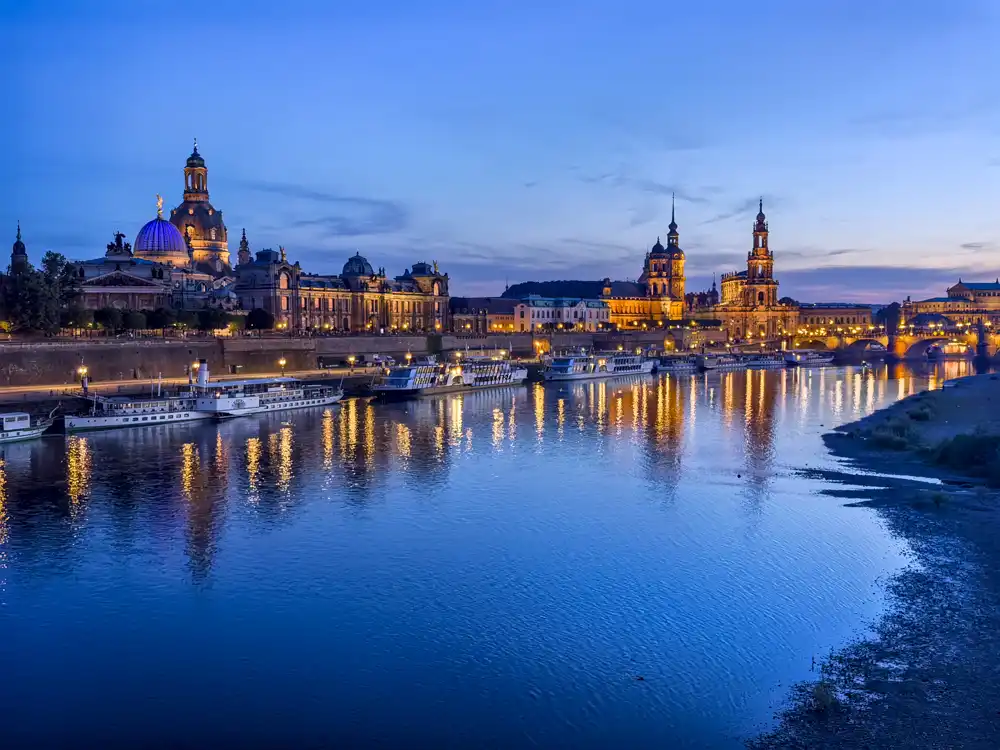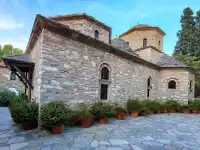Dresden is often called the “Florence on the Elbe.” But anyone who has read Kurt Vonnegut’s Slaughterhouse-Five knows the city bears deep scars from World War II. Dresden Altstadt and the surrounding areas were almost completely bombed by the Allies. Today, the city is known not only for its historical value but also for a renaissance in a modern style. Elegant terraces overlook the Elbe, baroque cathedrals—most destroyed in the war—have been restored, the iconic Zwinger stands proudly, and nearby modern architecture offers a completely new face to the city.
Zwinger
Our first steps on scooters led straight to the Zwinger. Royal splendor in the heart of the city. I’ve been here before—my first visit was on a school trip to the GDR in 1985. Back then, I was hopelessly in love with a classmate. I still have the yellowed ORWO slides with shots of Raphael and Rembrandt from the Zwinger galleries. Twenty slides cost five East German marks. As a bonus, we also saw the coronation jewels.
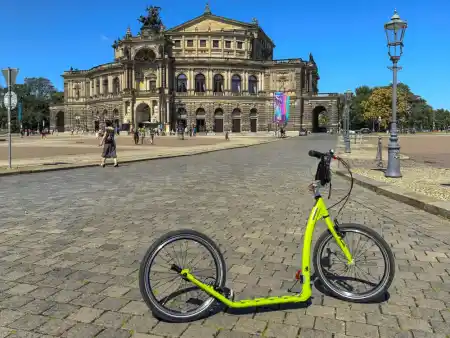
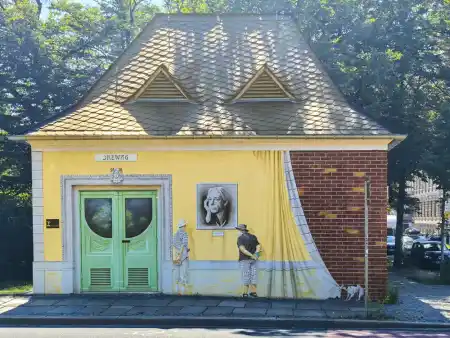
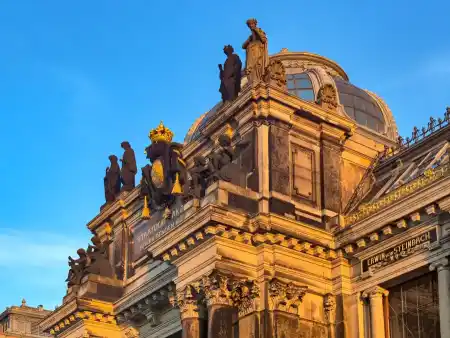

Decades later, I wanted to show the Zwinger to my kids. Driving all night from Edam in the Netherlands over East German highways, we finally arrived at dawn. I woke the kids: “Come see, we’re in the baroque jewel of Germany!” They looked at me and groaned: “Dad, we’re exhausted.” And that was the lesson: no matter how much you want, you can’t always see everything.
Now, on scooters, we’re back at the Zwinger for the third time. We glide over the smooth stones of Theater Platz, catching attention, sunlight glinting, ready to show Johnny the Zwinger’s hidden treasures. Scooting up to the upper terraces, we make a surprising discovery: the Zwinger and its gardens are under renovation. Everywhere, installers, scaffolds, broken gardens, and drained fountains.
Sport vs history – instagram war




“Isn’t this insane?”
“Looks like they’ve got it under control,” I replied.
The staff here could pull off unbelievable tricks and clearly loved Instagram. Rembrandt had to take a back seat. Our tour quickly turned into a photoshoot in the most incredible positions among statues, railings, and terrace niches.
The Zwinger remains a crown jewel of Dresden’s baroque architecture. Built in the 18th century, it still functions as a gallery and museum, and of course, as a backdrop for Instagram enthusiasts. It is the heart of the old city, a reminder of Dresden as a center of culture and art.
Brühl’s Terrace
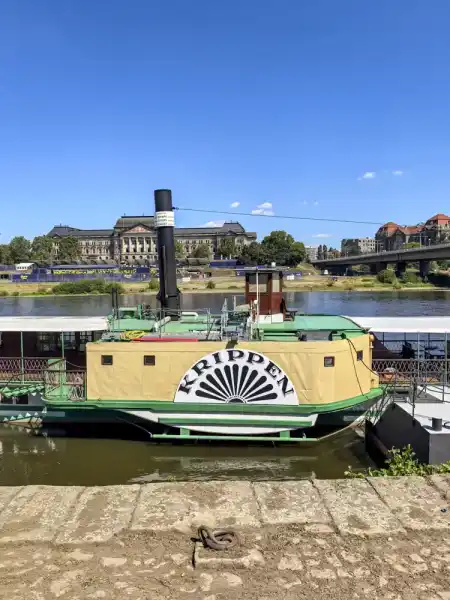

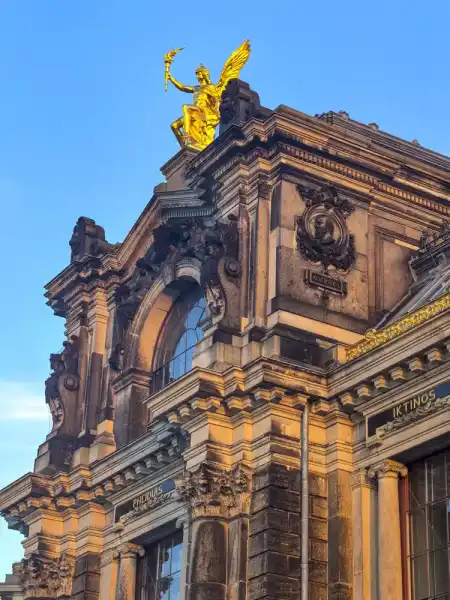
Altstadt is bordered by three bridges and the so-called Balcony of Europe, known locally as Brühl’s Terrace. The Elbe flows quietly past the historic center, while below, tourist boats line the docks. The terraces above are not only a place to stroll and take photos but also a social meeting point. Climb the stairs, and you’ll be rewarded with amazing views of the river and the Neustadt beyond.
Dresden Altstadt in the shadow of cathedrals
- Frauenkirche
- Hofkirche (Cathedral of the Holy Trinity)
- Kreuzkirche


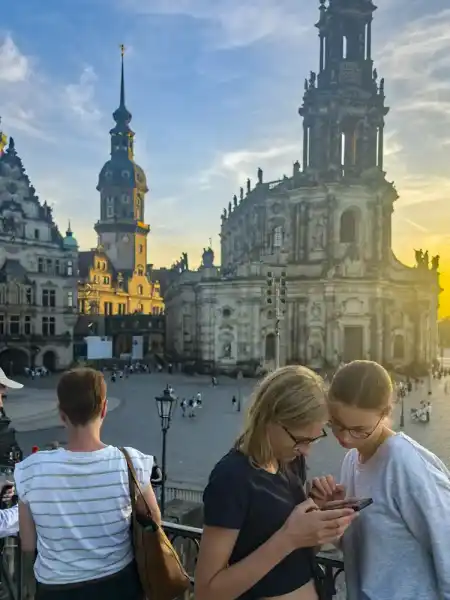
Dresden Cathedrals
The Dresden cathedrals bear witness to the city’s turbulent history. WWII obliterated the Frauenkirche, a baroque icon, but restorers painstakingly rebuilt it after the Berlin Wall fell. The €180 million effort paid off when the church reopened in 2005, revealing a breathtaking interior.
Hofkirche, connected to the royal palace, served as the royal chapel and still stands as one of Dresden’s most striking landmarks.
The third cathedral, Kreuzkirche, or the Church of the Holy Cross, also suffered wartime destruction, yet reconstruction in the 1950s brought it back to life. Its raw, powerful interior houses the famous Kreuzchor, one of Europe’s oldest and most respected boys’ choirs, active for over 700 years. The church also celebrates Heinrich Schütz (1585–1672), the most important German composer before Bach and the father of German baroque music.
Walking between these three sacred sites, the Zwinger, and the blue pipes of Seeworstadt feels like stepping through time—from majestic baroque, through DDR-era Leninist architecture, to contemporary modernity.ňStreets of Dresden
Seeworstadt separated by blue piping
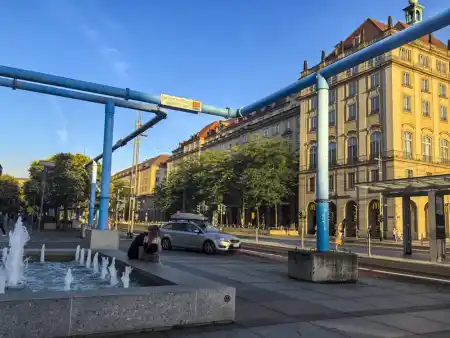
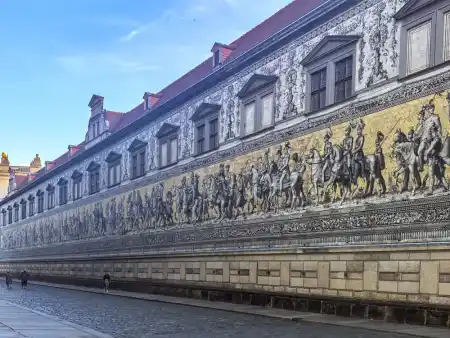
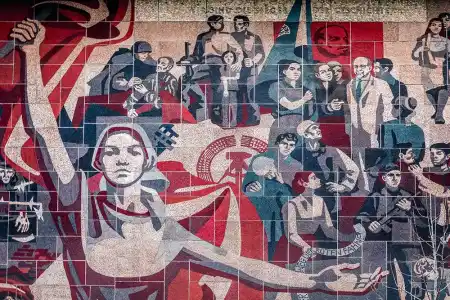

After scooting over the cobblestones of Altstadt, you reach the tram tracks dividing the city. Cross to Prager Strasse, and you enter a starkly modern world. This contrast is symbolically marked by bright blue pipes, which sparked our imagination.
Contemporary art? A wartime monument? The reality: these temporary pipes manage water during extensive construction work, protecting foundations in Dresden’s historically wet soil.
Prager Strasse


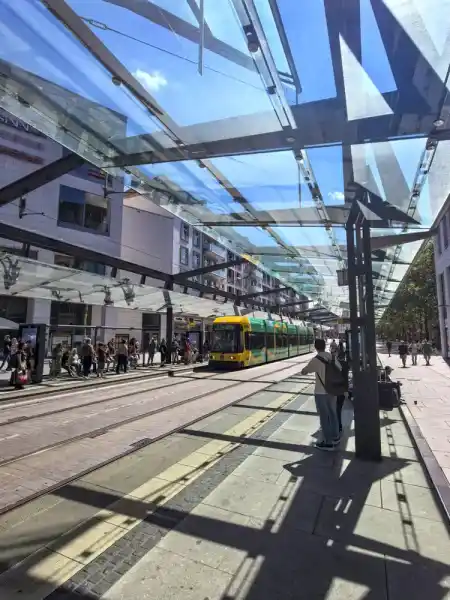

Dresden Altstadt: Scooter adventures
Prager Strasse doubles as a training ground for scooter skills: slaloming through crowds on smooth wide paving. Scooting burns calories, strengthens multiple muscle groups, and keeps you outdoors—arms, legs, core, back, and glutes all work together. At 18 km/h for an hour, you can burn around 820 kcal—more than cycling at the same speed or running at 9 km/h.
Dresden Altstadt life
Wandering around the town hall and winding streets, we always end up at Frauenkirche. By evening, the city shifts to the main square Altmarkt and the Elbe terraces. Street performers of all kinds coax small tips, and painted vendors sell souvenirs and crafts. People relax as the sun sets over the bridges, stretching the evening into what feels like forever.
We ride back to Neustadt on Alaunstrasse, where the night life is just beginning. Bars, art, music, and a relaxed, tolerant vibe make the neighborhood unforgettable.

